MOUNTAIN WEST STYLE
Exploring the design aesthetic of florist-farmers in the Rocky Mountain States
 The May 2019 issue of Florists’ Review was devoted to the Rocky Mountain West and that provided a perfect vehicle to showcase many of our member flower farmers, farmer-florists and floral designers based in Colorado, Idaho, Montana, Nevada, Utah, Wyoming and beyond.
The May 2019 issue of Florists’ Review was devoted to the Rocky Mountain West and that provided a perfect vehicle to showcase many of our member flower farmers, farmer-florists and floral designers based in Colorado, Idaho, Montana, Nevada, Utah, Wyoming and beyond.
The Slow Flowers Journal Issue No. 22 highlights the people, farms and studios who create floral beauty in what is a ruggedly beautiful landscape. Growing and sourcing local flowers here has its challenges, but those who embrace the slower, seasonal ethos are richly rewarded by a floral harvest that is as individual and untamed as the pioneering narrative of the area.
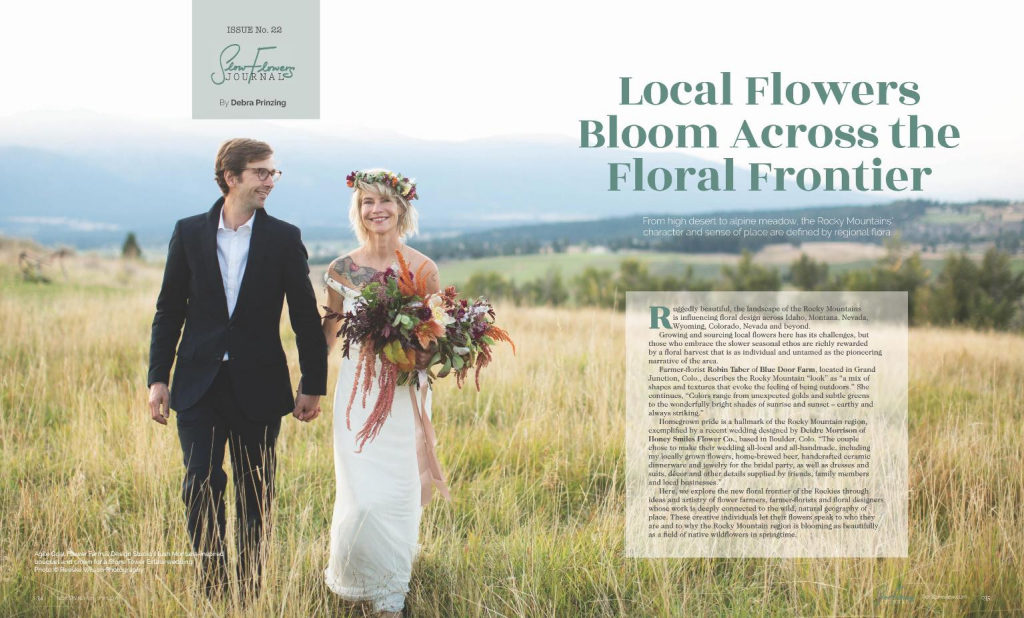
Farmer-florist Robin Taber of Colorado’s Blue Door Farm describes the Rocky Mountain “look” as a “mix of shapes and textures that evoke the feeling of being outdoors.” She continues: “Colors range from unexpected golds and subtle greens to the wonderfully bright shades of sunrise and sunset, earthy and always striking.”
Homegrown pride is a hallmark of the Rocky Mountain region, exemplified by a recent wedding designed by Deirdre Morrison of Honey Smiles Flower Co., based in Boulder. “The couple chose to make their wedding all-local and all-handmade, including my locally-grown flowers, home-brewed beer, hand-crafted ceramic dinnerware, hand-crafted jewelry for the bridal party, as well as dresses and suits, decor and other details supplied by friends, family members and local businesses.”
Here, we explore the new floral frontier of the Rockies through ideas and artistry of flower farmers, farmer-florists and floral designers whose work is deeply connected to the wild, natural geography of place. These creative individuals let their flowers speak to who they are and why the Rocky Mountain region’s floral frontier is blooming as beautifully as a field of native wildflowers in springtime.
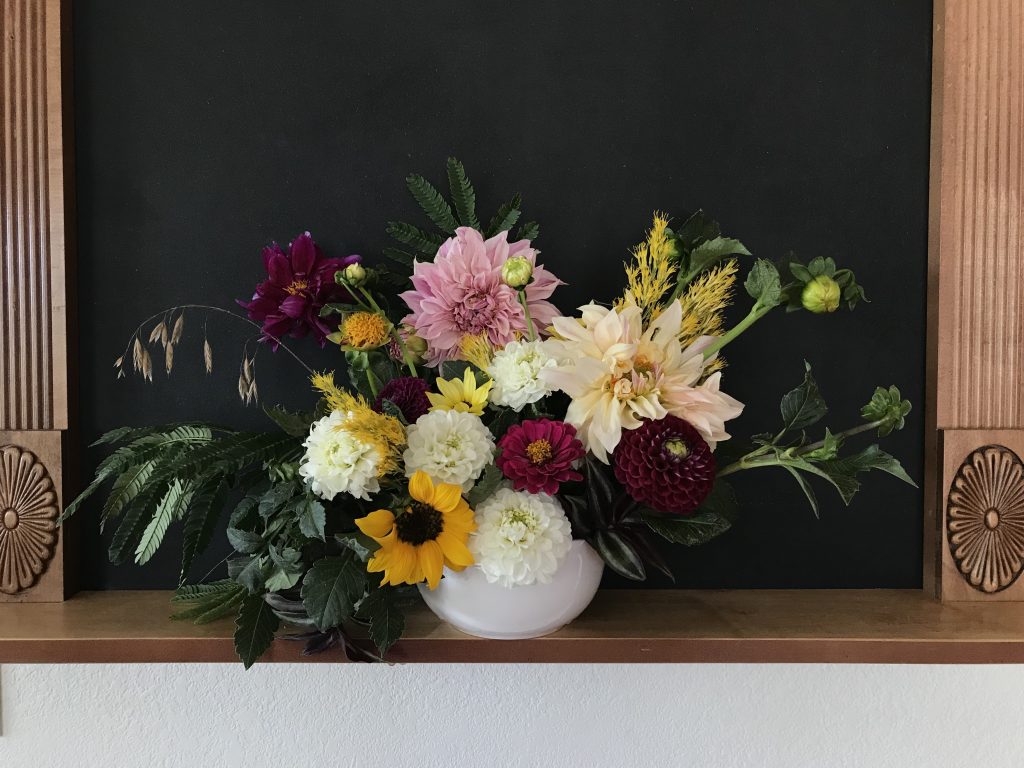
COLORADO:
Blue Door Farm, Grand Junction, Colorado
Details: bluedoorfarm.com, @bluedoorfarm
Robin and Mark Taber own Blue Door Farm in Grand Junction, the largest city in western Colorado , just 30 miles from the Utah border. Blue Door Farm is a small farm, design studio and vacation rental property for flower lovers.
Robin Taber primarily grows flowers for her own design clients. “I specifically want unusual colors, shapes and fragrances for my studio,” she says. “We focus on heat-loving flowers in unique colors and shapes, including cosmos, dahlias, celosia, statice, dusty Miller, carnations, strawflower, sunflowers, scented geraniums and fragrant herbs, such as Thai, lemon and lime basil, Rosemary and eucalyptus.”
As a farmer-florist, Robin Taber says her specialty is freestyle design: “I love to mix locally-grown, fresh and dry flowers and greenery in unexpected ways. I focus on vibrant colors, striking shapes and heirloom varieties that are only available locally and in season — fresh from harvest to your table. I always add at least one dried ingredient with a touch of whimsy, such as a twisted branch or seed pod, or a striped blade of grass.”
Many of her wedding customers are from out of town, including Denver, Texas, New York; even from abroad. “They really like our emphasis on using local flowers, and they definitely want freestyle designs that are unique and different.”
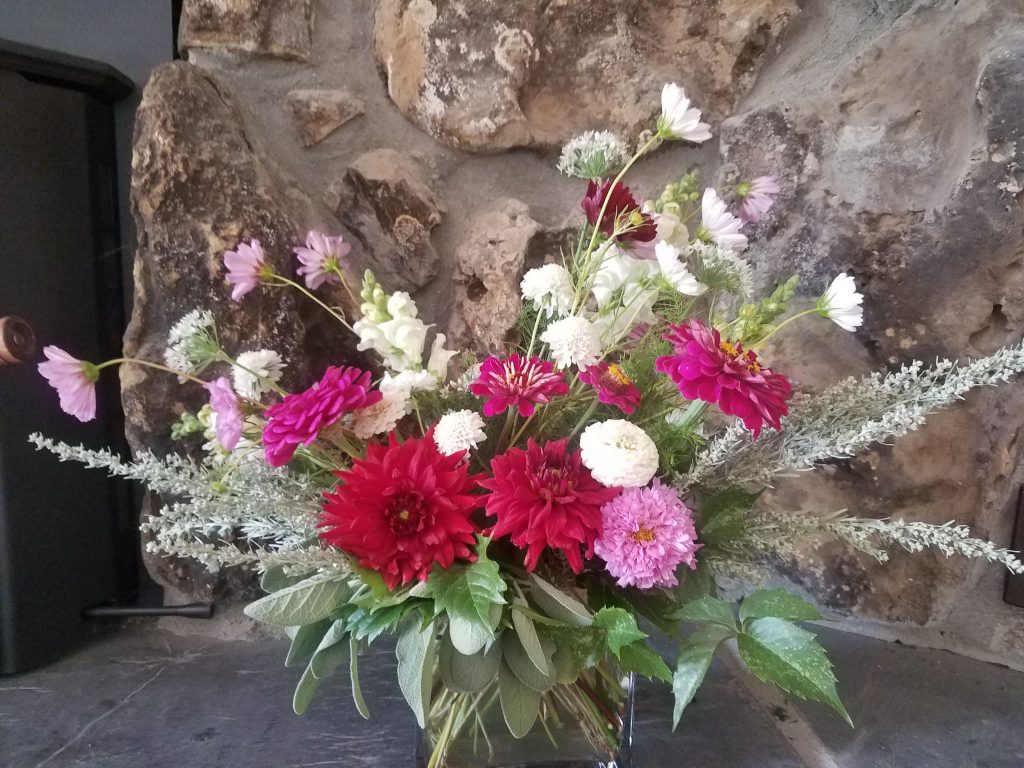
Butterfly Outpost, Grand Junction, Colorado
Details: Butterflyoutpost.com, @butterfly_outpost
Claire McCullough is a seasonal cut flower grower who supplies her bouquets and bunches to CSA, farmers’ market and event customers. “The Rocky Mountain aesthetic is less formal and has a natural, ‘wildflower’ look,” she says. “Many of my customers — visitors and locals alike — gather at family mountain cabins or have second homes in destination mountain towns. A good number of them live primarily in metropolitan areas such as Manhattan, Dallas, or even Paris. When here, their days are spent hiking or horseback riding. Coming home to formal floral arrangements would feel out of place, while a simple Mason jar filled with colorful blooms is perfect for their lifestyles. They appreciate the fact that my flowers are fresh, have a long vase life, and are locally-grown without the use of pesticides.”
Butterfly Outpost specializes in annuals and perennials suitable to the cold winters and hot summers of Western Colorado’s high desert. “We try to work with nature and observe what thrives in our zone,” McCullough says. “This climate is actually ideal for many favorites, such as lavender, peonies, dahlias, cosmos and celosia. By focusing on seasonal field-cut flowers, our season is primarily summer and fall.”
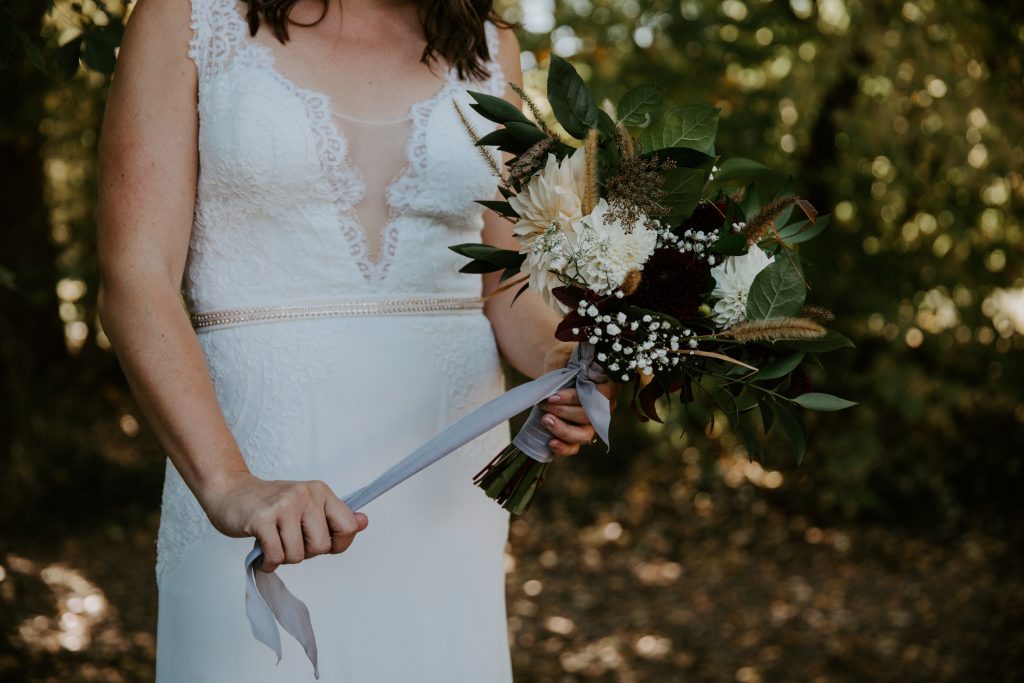
Honey Smiles Flower Co., Boulder, Colorado
Details: honeysmiles.com, @honeysmilesflowerco
Deidre Morrison, the founder, grower, and designer at Honey Smiles Flower Co., supplies clients in the Boulder area and nearby mountain resorts. Her flowers follow the seasons: specialty tulips, narcissus, anemone, ranunculus and lilacs in the spring; sunflowers, zinnias, snapdragons, scabiosa, lace flower, gomphrena and lisianthus in summer; and dahlias, amaranth, zinnias, sunflowers, strawflower, rudbeckia and ornamental grasses in autumn. As a farmer-florist, Morrison harvests from her own fields, but also relies on other Denver area farms to augment her wedding and event work.
She describes her style as “honest” and “true to the flowers,” saying, “I use a lot of ombré color palettes in my designs rather than mixing complementary colors or combinations and I always start with a look and plan in mind, often letting the flowers do the work for me.”
This approach respects form and character of each stem, resonating with Morrison’s view of the West. “It’s authentic and real. Brides and grooms want color palettes that reflect those they see in our landscapes and environments. Just like the Rocky Mountains, occasional pops of color are always supported by a backbone of greens, whites, and neutrals.”
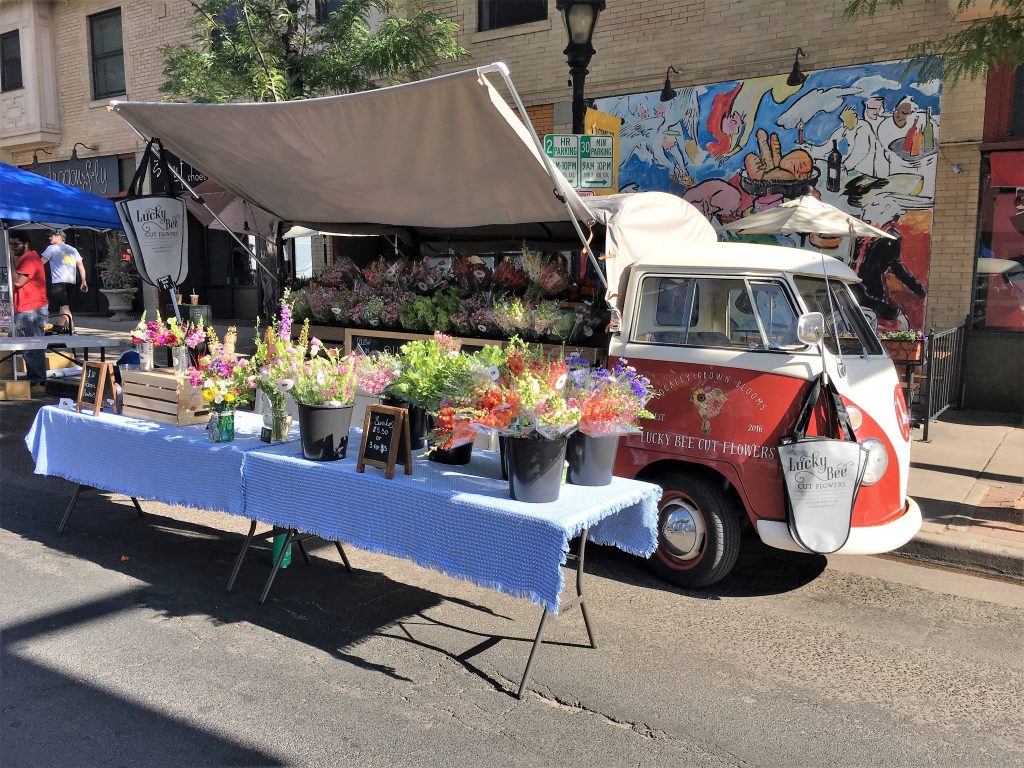
Lucky Bee Cut Flowers, Longmont, Colorado
Details: luckybeecutflowers.com, @luckybeecutflowersllc
Cody and Amy Stoker consider themselves flower farmers, although Amy is often asked to design custom floral arrangements with the flowers she grows. The flower variety list on Lucky Bee’s web site is extensive, but the couple this year plans to focus on sweet peas, lisianthus and dahlias, as well as varieties of annuals that can be dried.
“The Rocky Mountain aesthetic is a reflection of Colorado’s natural beauty — free, wild and trailblazing design,” Amy Stoker says.
Local fans flock to area farmers’ markets to buy from Lucky Bee’s distinct flower stall – a vintage VW van that serves as their “storefront.” She continues: “we are seeing a steady increase and interest in purchasing locally. Connecting directly with our customers has been key for us as most folks want to get to know the people who are behind their flowers. People are always amazed at how long their local flowers last. This has given us the opportunity to educate customers on new types of flowers, our growing methods and how to care for their bouquets.”
The Stokers are encouraged by a new partnership with a large floral wholesaler who is expanding cooler space to showcase Colorado-grown flowers. It’s an indication of the increased demand in the Denver marketplace.

IDAHO:
Deadhead Cut Flowers, Blackfoot, Idaho
Details: deadheadcutflowers.com, @deadheadcutflowers
Jeriann Sabin and Ralph Thurston pioneered the local flower scene in the resort communities of Sun Valley, Idaho, and Jackson Hole, Wyoming, growing seasonal flowers and supplying the destination-wedding marketplace. “For so long, we were the ‘cool, local, seasonal flower farmers,’” Sabin says. “Our clients relied on us to provide the best and freshest for their designs, long before it was a ‘thing.’”
Their former farm, Bindweed, now owned by their nephew, found success in sales from what they call “workhorse flowers,” popular, good-selling varieties such as French tulips, rarely seen on the local marketplace. “By planting early-, middle- and late-blooming varieties in different environments, we were able to harvest more than 20,000 stems over a 12-week period to kick-start our season,” Sabin says. Peonies, lilacs and viburnum at the beginning of the season lead to delphinium, bellflower, Asclepias and clematis. By early July, the farm’s sunflowers take center stage, accompanied by snapdragons, sweet peas and black-eyed Susan. “We also grow and sell ‘greens’ throughout the season: sage, dusty Miller, raspberry and blackberry foliage and bells of Ireland. And because this is the West, we also grow a lot of ornamental grasses.”
What is unique about the Rocky Mountain aesthetic? “In the mountain resorts near us, the look is lush but in a very uncomplicated way,” Sabin says. “No fussy, over-arranged pieces; just lots of beautiful flowers in unorthodox containers: boots, jars, tins. Our brides want to experience the feeling of having just walked the meadows, gathering blooms at will, creating a luscious, full bouquet – which is not what just happens, as we know. It’s actually a tricky thing to allow flowers to appear natural and un-arranged.”
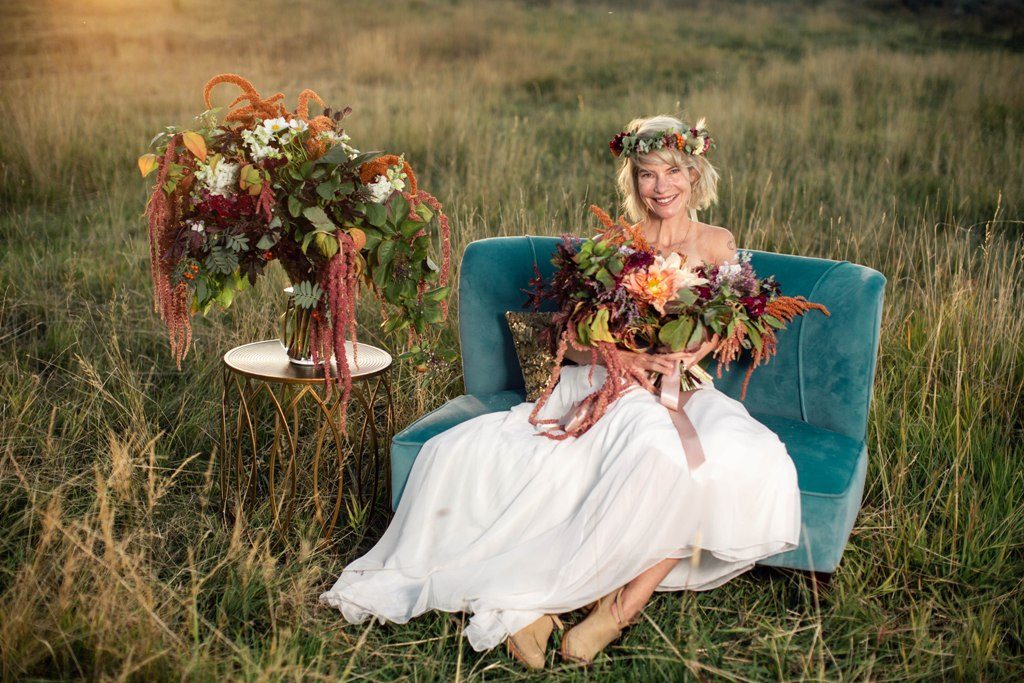
MONTANA
Agile Goat Flower Farm & Design Studio, Florence, Montana
Details: agilegoatflowerfarm.com, @agilegoatflowerfarm
Kristen Tack is a flower farm and studio-based wedding and event florist who grows a diversity of crops – including showy flowers, lush foliages and rich, textural elements – to supply the design needs of her floral studio. “Our primary crops are wedding favorites, such as specialty tulips, ranunculus, anemones, peonies, stock, snapdragons, sweet peas and dahlias, with roses coming soon,” Tack says. “The primary challenge we face is a limited growing season – early May through mid-/late September. While this mostly coincides with wedding season, we do have requests for flowers outside these months. Customers in our area are focused on local products; thus, many brides are looking for a sustainable alternative to imported flowers. They want a design aesthetic that can be captured with local, seasonally available blooms.”
Tack has created a line of dried event floral that ranges from bridal bouquets and boutonnieres to table arrangements and arch décor, focusing on Western Montana flora for the off season.
She describes Agile Goat’s aesthetic as lush, organic, seasonally relevant. “The Rocky Mountain aesthetic is much like the Rocky Mountains themselves: rugged, expansive, stunning, natural, free-flowing and rustic. Most brides want to embrace the beauty around them, so they look for flowers that complement the natural allure of the mountain range. You will often find a ceremony site made of Aspen branches and rough-cut pine timbers. It isn’t unusual to find deer antler or cowhide accents. If there isn’t a breathtaking mountain view as the ceremony backdrop, then it is in a seemingly endless grassy field with a sunset that takes your breath away. Receptions are typically housed in a restored barn or a tent located in an idyllic mountain meadow. Complementary floral décor is lush, natural and seasonally appropriate.”
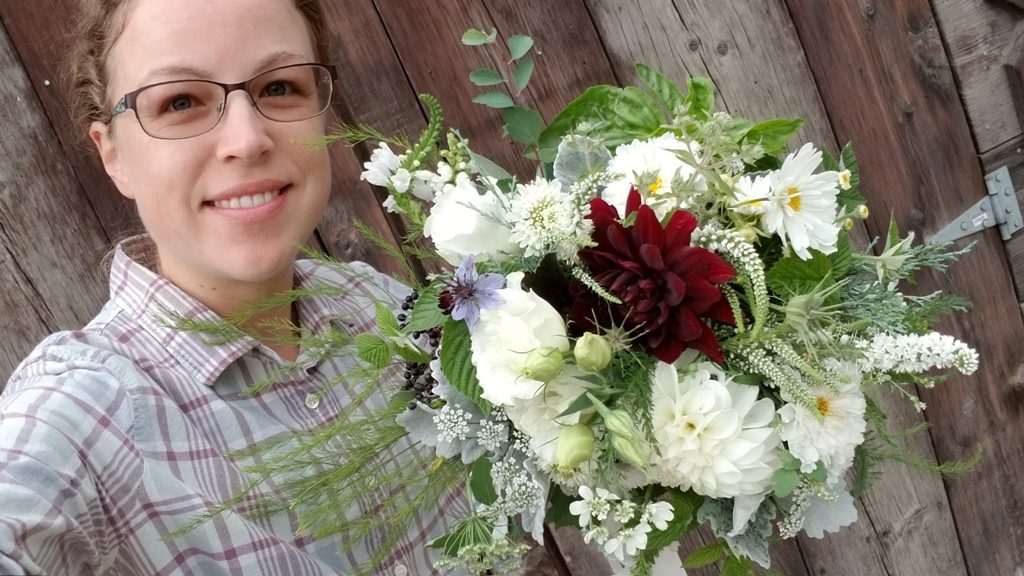
Flathead Farmworks, Kalispell, Montana
Details: flatheadfarmworks.com, @flatheadfarmworks
April Vomfell is an Eastern Montana urban flower farmer and wedding designer who specializes in growing dahlias, ranunculus, lisianthus, and favorite annuals like cosmos, scabiosa and zinnias, as well as a wide variety of perennials, herbs and foliages.
“My aesthetic is texture-rich, vibrant and natural. I highlight the seasonal beauty of what I grow in my floral designs,” Vomfell explains. “At Flathead Farmworks, we use 100 percent local flowers and foliage — only what I can grow or forage locally. I embrace the challenge as a creative limitation; my impetus is to appreciate my surroundings, the season and the unique materials at hand.”
The farmer-florist describes the unique Rocky Mountain floral style as “outdoorsy and natural; focused on enjoying the beauty of our surroundings as much as possible during our short summers.” The floral palette for weddings includes a range of blooms, including native or commonly-grown Montana flowers, such as columbine, lupine, blooming branches and foraged foliage. Like others in the region, Vomfell has begun to incorporate more dried flowers into her designs during the fall and winter months.
More clients are asking for Montana-grown flowers than ever before, she says. “Our valley has always been an agricultural region and our destination wedding clients are excited about having local flowers to go along with their outdoor venues, local food and unique, down-to-earth experiences.”
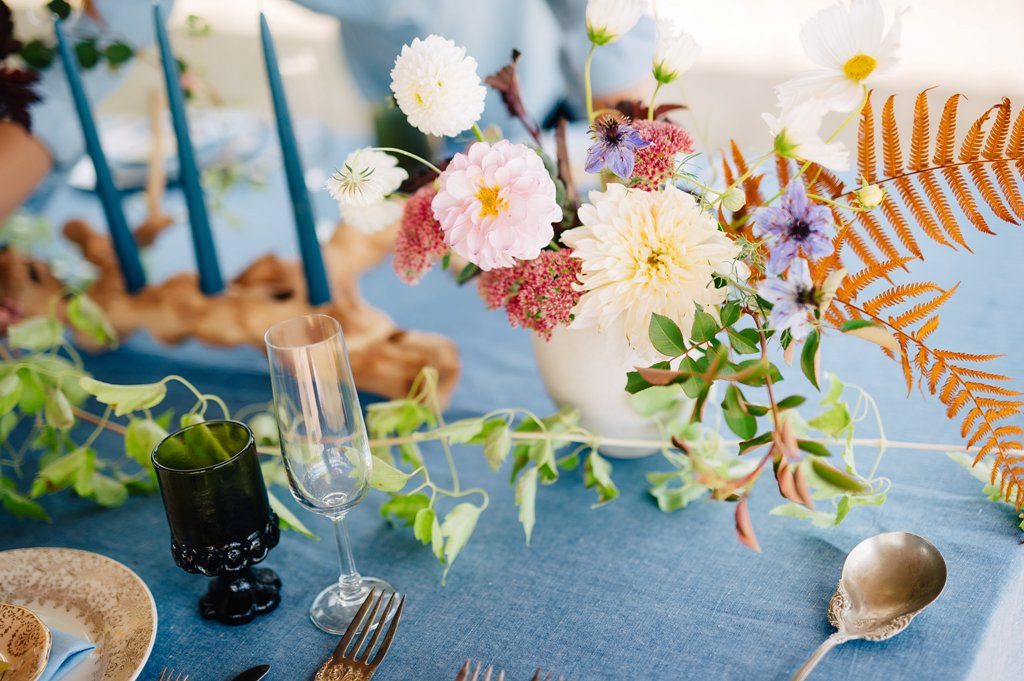
Labellum, Bozeman, Montana
Details: labellumflower.com, @labellumflowers
Remy Brault owns a retail flower shop in downtown Bozeman, specializing in event florals. She also describes herself as a ‘micro urban farmer.’ “Our style is hip, modern and organic, focusing on natural elements with rich textures,” Brault says. “The Montana Rockies are wild and raw, blooming with life. This powerful backdrop, with mountains, plains and grasslands, is like no other. We love to mix local branches and native grasses with found antlers into many of our designs. ‘Ethical foraging’ is a must and a pleasure.”
Given the region’s extreme climate swings, season by season, Brault says she often works “plans B and C” into her event designs. “We can literally have all four seasons in one day here in the Gallatin Valley of Montana.”
Despite the constant whims of Mother Nature and their affect on local flower fields and crops, Brault is committed to her approach. “Our clients are super excited about keeping flowers as local as possible and they love it when we share our flower sources with them.”
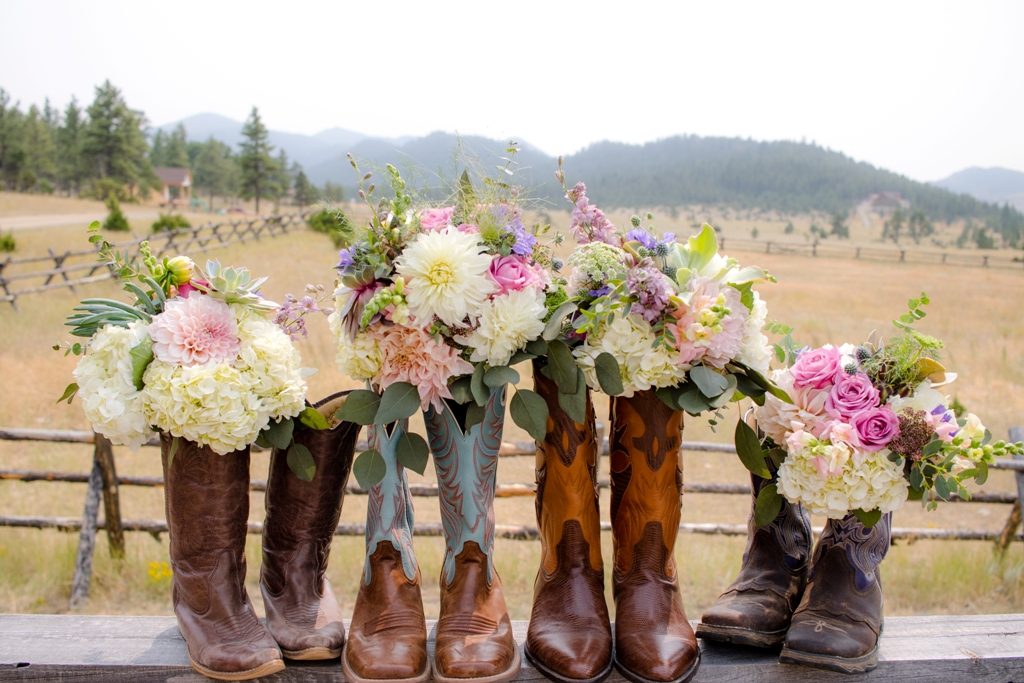
The Herb and Garden, Helena, Montana
Details: theherbandgarden.com, @theherbandgarden
Cindy Hanson opened The Herb and Garden in Helena in 2014. She was featured in a Slow Flowers Journal Q&A called “Keeping it Local in Montana” (August 2017). As a retail florist, Hanson specializes in everyday flowers, wedding and event flowers, gifts and plants, with an emphasis on local, regional and domestic flower sourcing. “Our season for locally-grown flowers runs from early June through October 1st when Helena typically has its first frost,” Hanson says. “I love working with my local growers and encourage them to use season-extending methods. I appreciate customers who choose to shop local. They are rewarded with product that is so fresh and unique.”
She sources seasonal flowers through several local Montana farms, including delphinium, painted daisy, lady’s mantle, allium, foxglove, dianthus, peonies, sweet peas, yarrow, zinnias, statice, sunflowers, dahlias, amaranth, broom corn and other grasses, lavender and flowering branches. “I’m also interested in the local foraged products and fall produce, such as pumpkins.”
The Herb and Garden is well known for its loose, natural, seasonally-inspired aesthetic. “Montana is known for its individualism,” Hanson adds. “That is how I like to think of our floral aesthetic here.”
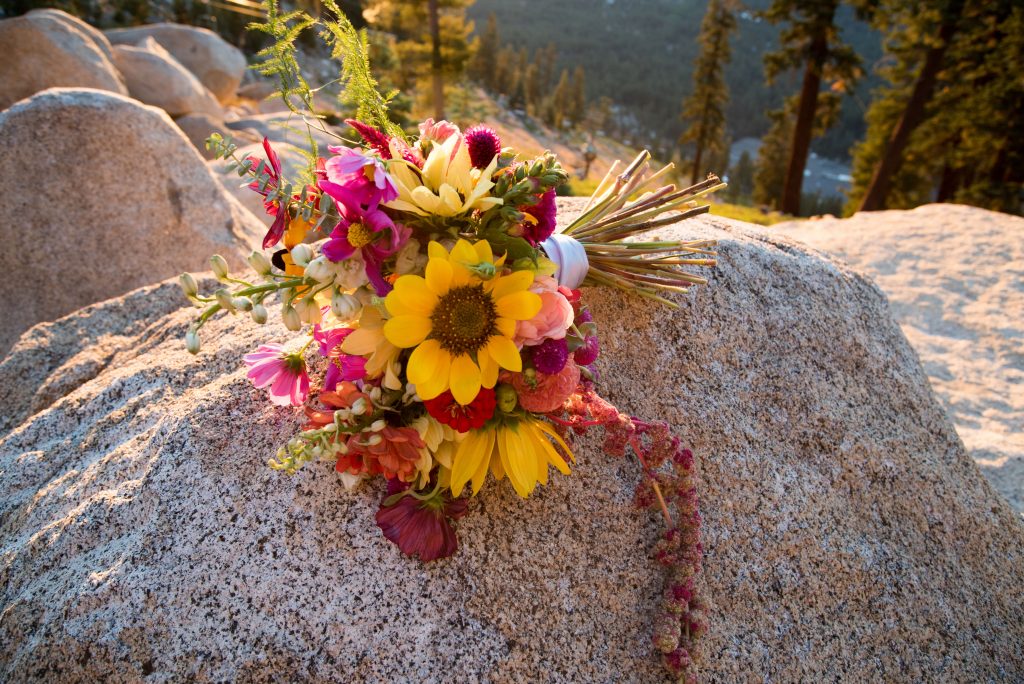
NEVADA
Sunflower &Sage Floral, Gardnerville, Nevada
Details: sunflowerandsagefloral.com, @sunflowerandsagefloral
Bethany Davey Frediani is a studio-based wedding and event florist serving the Lake Tahoe area. Her designs echo the wild and rugged beauty of the region, with touches of elegance. “Most of my clients are excited to hear that I will be incorporating regional floral product into their wedding designs. I like to utilize the blooms that are thriving at the time of the wedding, filing in with foraged foliage and bringing in product from my neighboring flower hub of California,” Frediani says. “I love to infuse my work, be it wedding flowers or large-scale, fine art floral installations, with whimsical, dreamy and organic elements.”
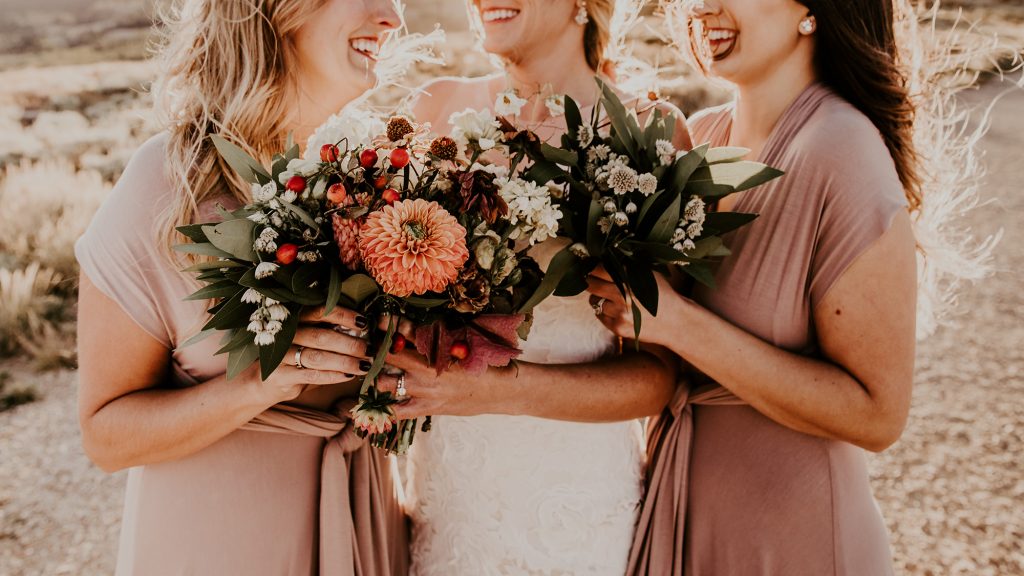
UTAH
Poppin’ Blossoms Flower Farm, Orem, Utah
Details: poppinblossoms.com, @poppinblossoms
Laura Pittard grows primarily for her wedding florists and designers, although she has future plans to offer her flowers to the public. She is known for her beautiful dahlias and lisianthus, high-demand blooms not typically found locally. “I’m also trying my hand at roses,” she says.
“My clients are thrilled to have a local option. They are shocked at the quality, as flower farming is not really a ‘trend’ here in Utah’s high desert. They also love my variety, including stems with ‘character’ — bent stems, blooms past their prime, such as aged varieties of lisianthus, bells of Ireland and Queen Anne’s lace seed heads.”
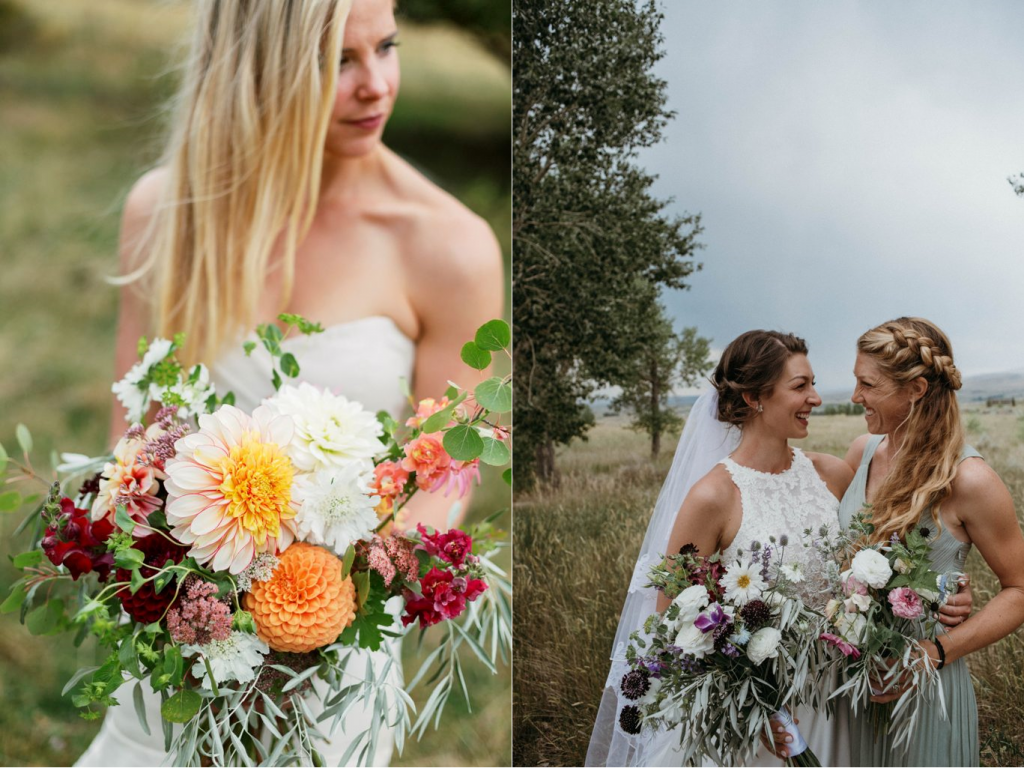
WYOMING
Aurea Floral Design/Dandelion Farm, Lander, Wyoming
Details: aureafloraldesign.com, @aurea.floraldesign
Teresa Tibbetts is a flower farmer and studio-based wedding and event florist who specializes in growing heirloom and ephemeral flowers, such as sweet peas, scabiosa, dahlias, anemones, ranunculus and Iceland poppies. She also raises “xeric natives,” such as yarrow, coneflower and rudbeckia, and forages locally for Aspen, juniper and sage.
“My designs are inspired by nature’s form and structure, embracing the whimsical and wild,” Tibbetts explains. “The aesthetic of the Rocky Mountains is loose and light, balancing the soft with prickly; the fine with bold. We take our cues from the deserts and the mountains. An arrangement full of lush, shiny, deep green foliage looks artificial and contrived here, in my opinion. Instead, we embrace the blue-grays of sage and juniper; the delicate texture of golden grasses and twinkling yellow-green of Aspen.”
Download free PDF of Local Flowers Bloom here.
I’m delighted to serve as Contributing Editor for Slow Flowers Journal, found in the pages of Florists’ Review. It’s the leading trade magazine in the floral industry and the only independent periodical for the retail, wholesale and supplier market. Take advantage of the special subscription offer for members of the Slow Flowers Community. Click here for details.

